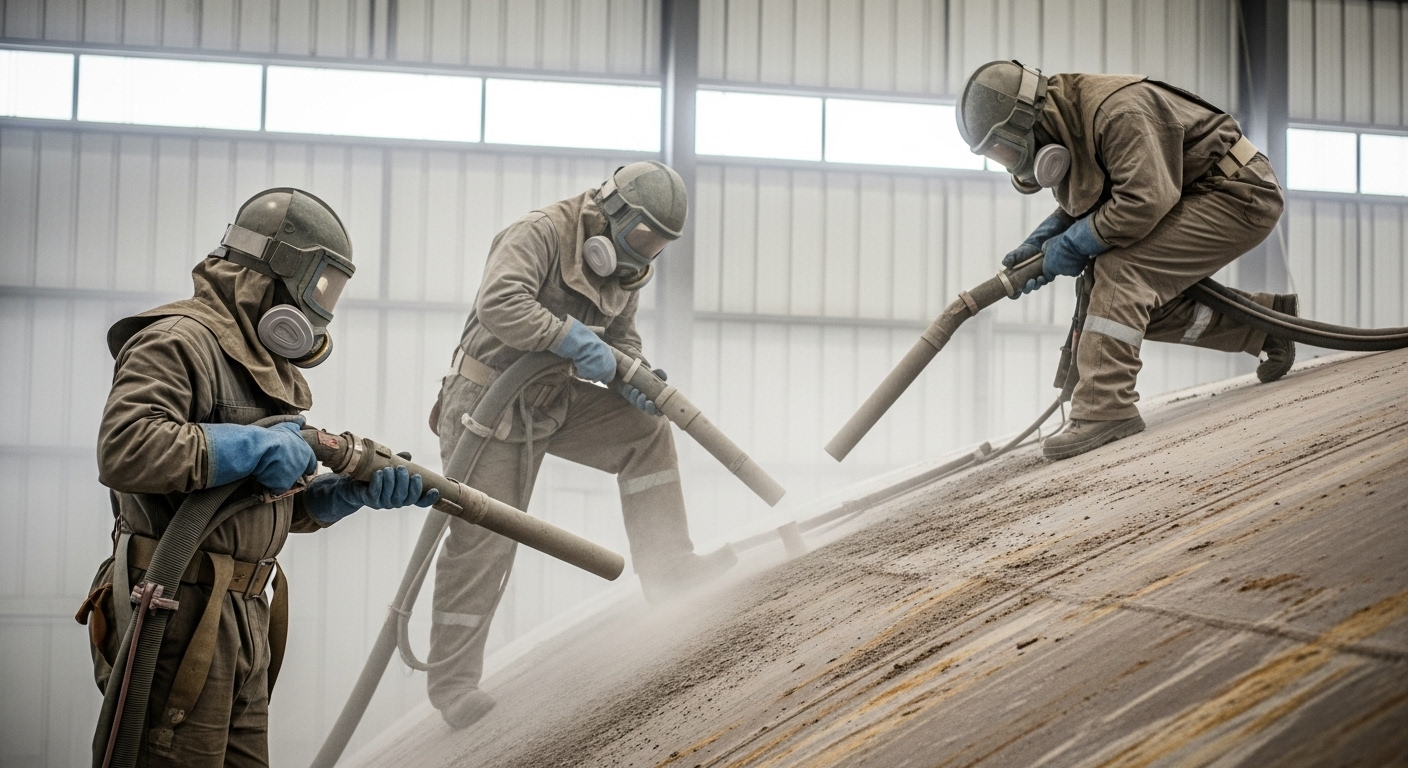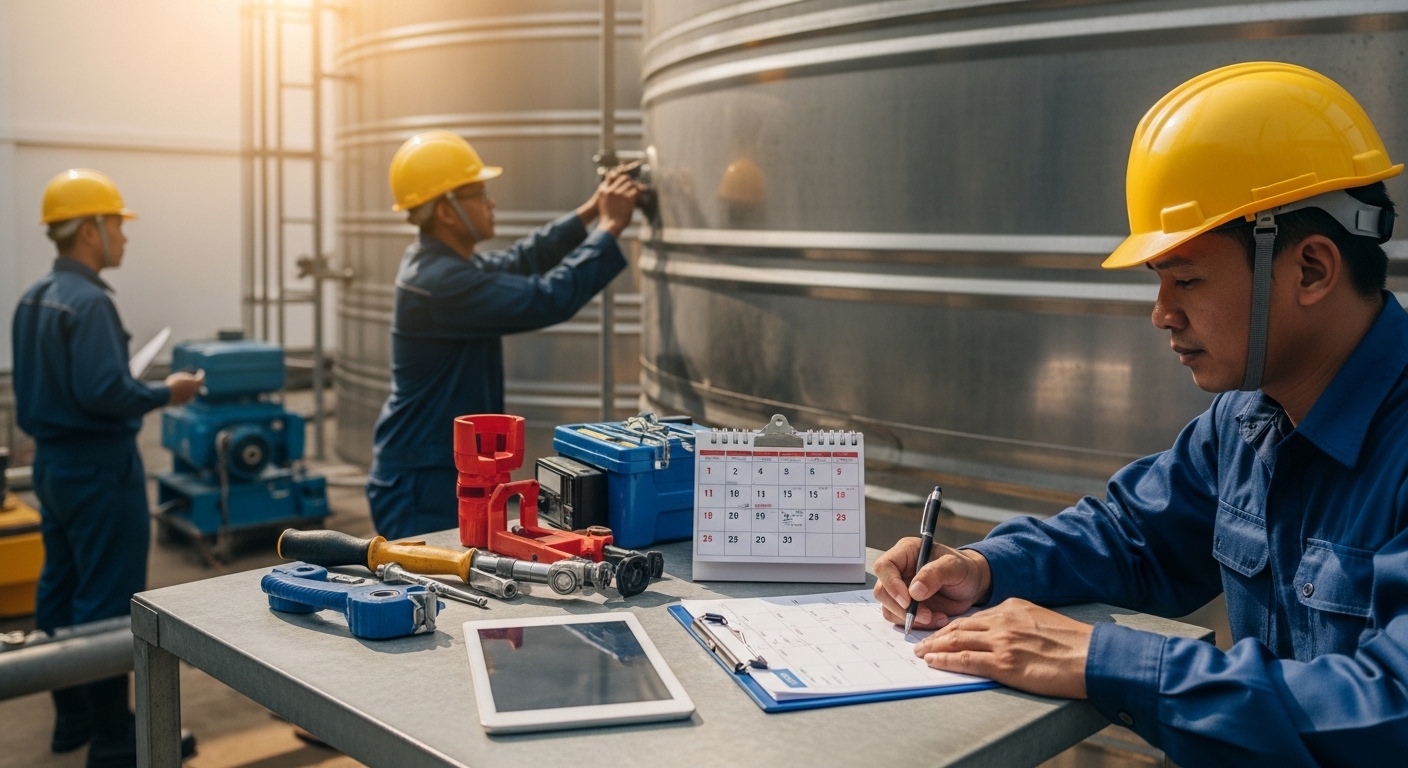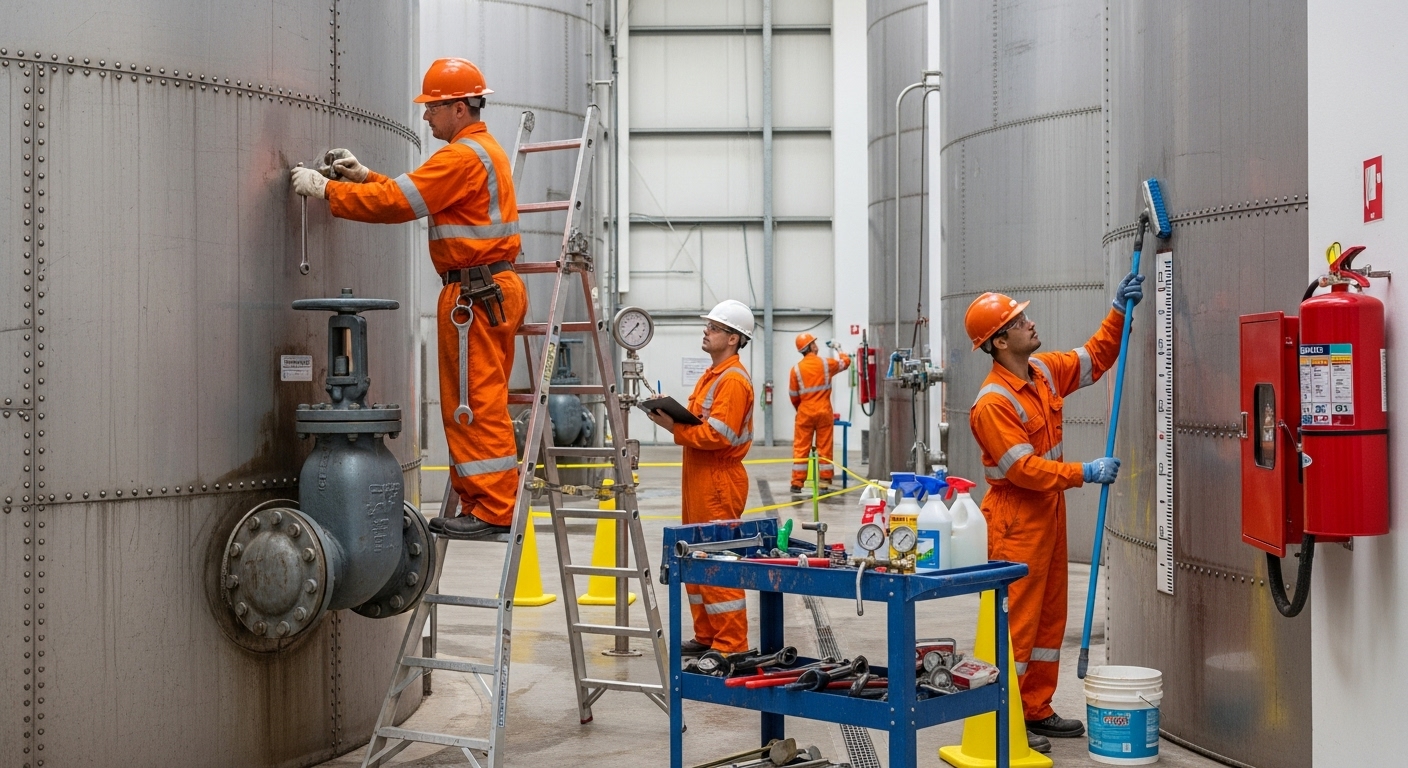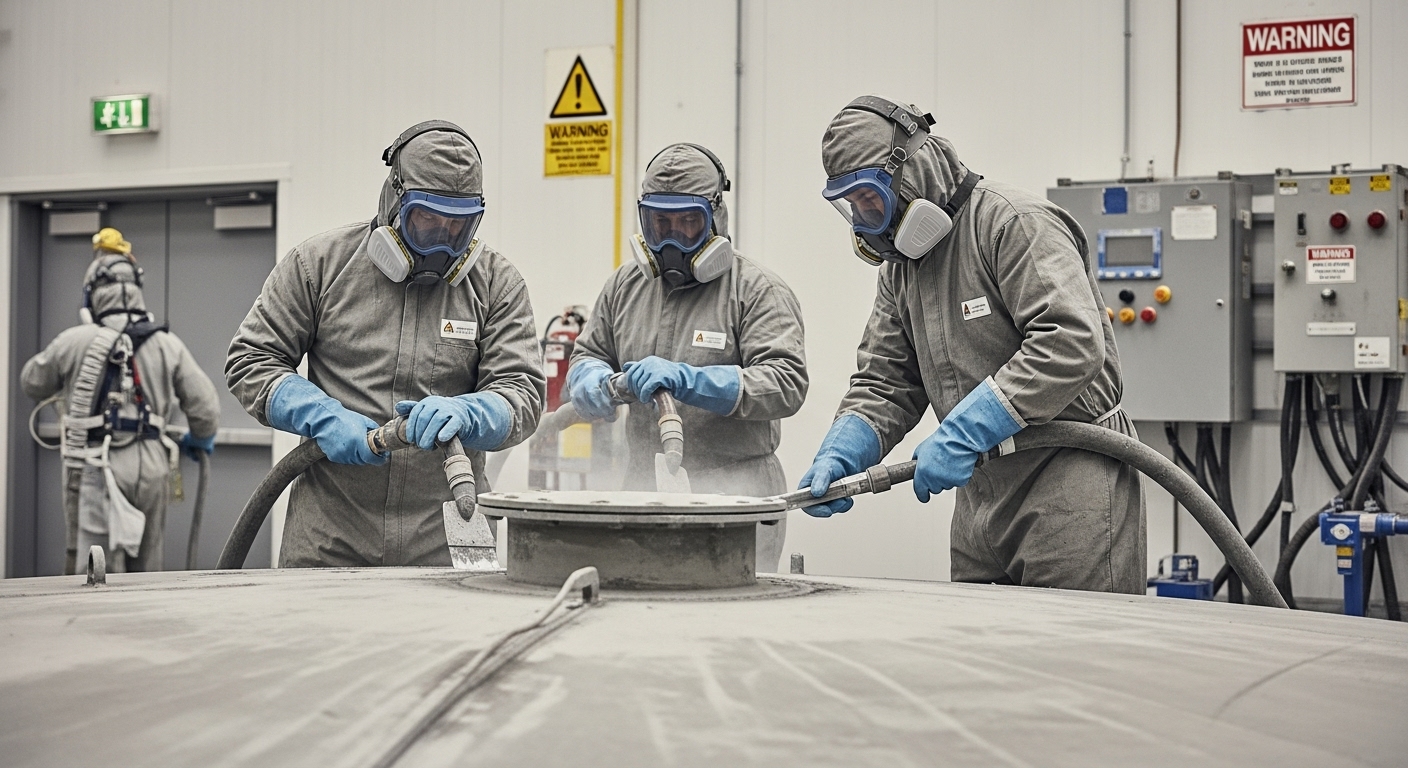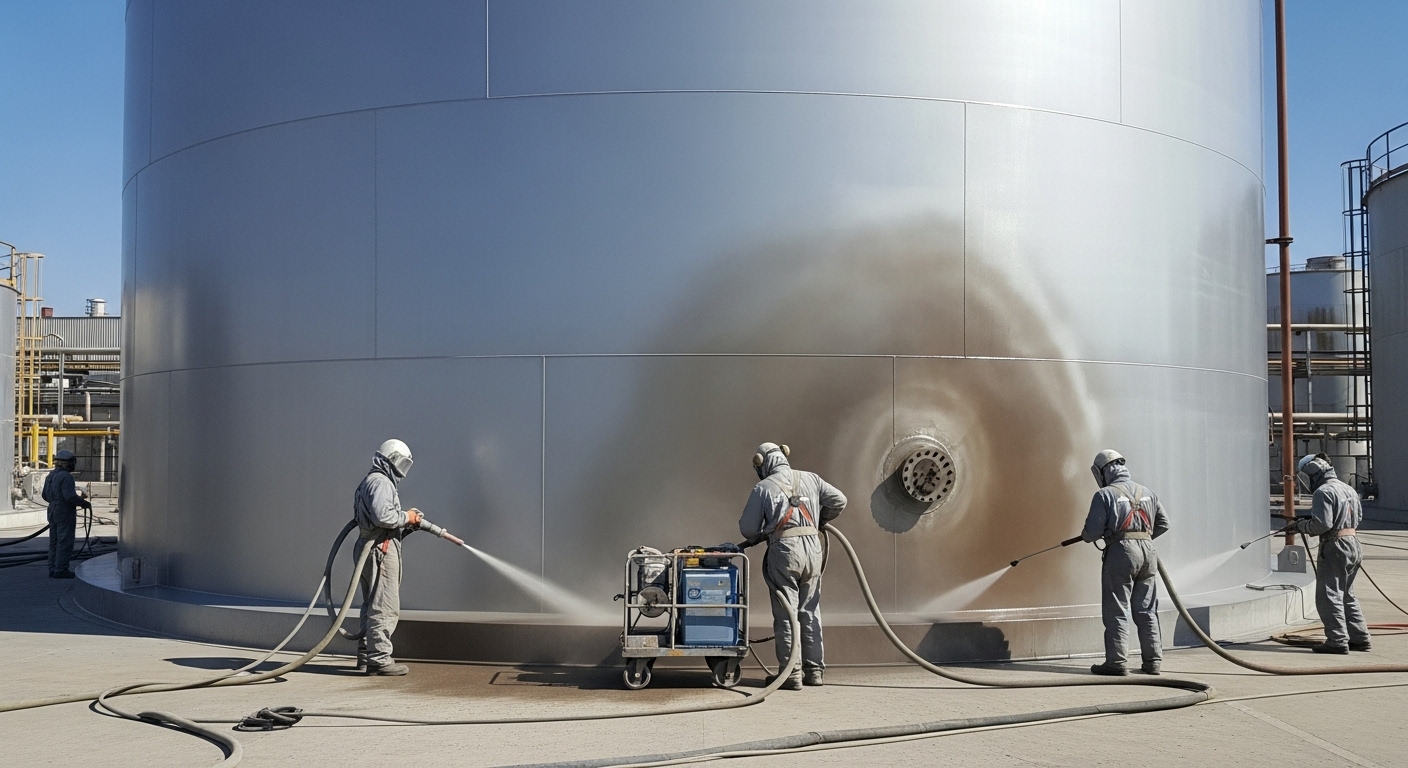A water tank is more than just a storage structure—it’s a lifeline for communities, industries, and facilities that depend on safe, clean, and reliable water. But here’s what many overlook: the health of a tank doesn’t depend solely on the paint or coatings you see on the outside.
The true strength lies in what happens before that—the water tank surface preparation process. Without proper preparation, even the most advanced coatings can fail within a few years, leading to corrosion, leaks, and costly repairs.
This guide is designed to walk you through the entire process, from assessment before preparation to final coating application. We’ll cover why preparation matters, the most effective tank cleaning methods, how surface preparation standards guide the work, and the science behind coating adhesion preparation.
Whether you manage municipal tanks, industrial facilities, or community towers, understanding these steps will help you protect your infrastructure for the long term.
Why Proper Water Tank Surface Preparation Determines the Lifespan of Your Tank
Think of a tank like a house: you wouldn’t put fresh paint over crumbling walls, right? The same logic applies here. Proper water tank surface preparation is the backbone of coating success. It ensures contaminants like rust, oil, or dust don’t block adhesion. It also provides a textured profile for coatings to grip, known as coating adhesion optimization.
Skipping this stage or rushing it can result in blistering, peeling, and premature failure, which ultimately costs far more than doing it right the first time. That’s why professional crews conduct thorough assessment before preparation, checking for corrosion, structural damage, and environmental risks before blasting begins. This process not only extends the tank’s life but also guarantees safety and compliance with surface cleanliness standards.
When tanks are prepared correctly, coatings can last decades rather than years—a massive difference in both performance and maintenance costs.
Effective Tank Cleaning Methods for A Contaminant-Free Foundation
Before blasting or priming starts, tanks must be completely free from dirt, biological growth, or chemical residues. Advanced tank cleaning methods include high-pressure washing, chemical cleaning agents, and vacuum systems designed to remove debris without damaging the steel substrate. Each method targets a different form of contamination—from algae and sediment buildup to grease and mineral deposits.
Why is this stage critical?
Because even microscopic contamination can sabotage coatings. Imagine trying to tape something to a dusty wall—it won’t stick. The same happens with coatings on steel. Removing contaminants is non-negotiable if you want proper adhesion and long-term durability.
Specialists also document every cleaning step to ensure compliance with surface cleanliness standards. This transparent approach gives tank owners peace of mind, proving that surfaces are ready for blasting, profiling, and eventual coatings. Without it, coatings may fail within months.
Meeting Surface Preparation Standards: How Industry Benchmarks Shape the Process
Standards exist for a reason—they ensure consistency, safety, and quality. In tank projects, surface preparation standards such as those from SSPC (Society for Protective Coatings) or NACE are the guiding framework. These define acceptable levels of rust removal, surface profile depth, and overall cleanliness.
For example, one standard might require total surface contamination removal, while another specifies a range for surface roughness to optimize coating performance. Meeting these standards isn’t just about passing an inspection; it’s about guaranteeing coating compatibility so the system performs as intended for years to come.
Experienced contractors use specialized tools like surface profile comparators and cleanliness gauges to verify results. It’s a science-driven process where precision matters, because coatings can’t perform if the surface beneath them doesn’t meet the required criteria. Following these standards removes guesswork and creates a solid foundation for protective systems.
Mastering Coating Adhesion Preparation: Creating the Perfect Bond for Protection
Here’s where the science really comes in. Coating adhesion preparation focuses on creating the right kind of surface texture, or “tooth,” that coatings can lock into. Too smooth, and coatings slide off. Too rough, and coatings may crack or wear prematurely. The balance is achieved through controlled blasting, abrasive selection, and precise monitoring.
Contractors evaluate the tank’s substrate condition, prior coatings, and intended primer system before deciding on the right approach. This often involves careful blast media selection, using abrasives like garnet, steel grit, or aluminum oxide, depending on project needs. Each abrasive creates a unique surface profile, which is matched to the coating’s requirements.
Timing plays a big role here too. Once blasting is complete, the clock is ticking. Moisture or airborne contaminants can settle on freshly blasted steel quickly. That’s why professionals move swiftly into primer application preparation, ensuring that protective coatings are applied without delay.
Advanced Blast Media Selection and Its Role in Substrate Integrity
Not all abrasives are equal, and poor blast media selection can do more harm than good. Some materials cut too aggressively, potentially thinning steel, while others fail to remove stubborn corrosion. Advanced projects require selecting the right abrasive to balance cleaning efficiency with substrate preservation.
For instance, steel grit is excellent for aggressive rust removal techniques, while garnet creates a finer, more controlled profile suitable for sensitive coatings. Matching media to the tank’s condition ensures both long-term protection and efficient application.
This stage also plays into long-term maintenance planning. Tanks blasted with the right media tend to perform better and require fewer touch-ups over time. The right choice saves money, prevents downtime, and ensures a coating system performs exactly as designed.
The Link Between Maintenance Planning and Sustainable Tank Longevity
Surface preparation isn’t just about the present—it sets the tone for the future. A tank that undergoes professional preparation, aligned with maintenance planning, is far easier to care for over its lifespan. With documented profiles, coating compatibility checks, and clear cleaning histories, future inspections become more predictable and efficient.
This also reduces the frequency of costly full-scale restorations. Instead of dealing with premature failures, owners can schedule minor touch-ups, inspections, or re-coatings at planned intervals. The result? Lower lifecycle costs and tanks that remain compliant with safety and quality standards.
In short, proper preparation is both a preventive and predictive measure. It helps extend tank life, reduces risks, and builds confidence that water systems will continue delivering clean, safe water for decades.
Why Every Tank Project Must Begin with Proper Preparation
When it comes to water tanks, the real work begins before the paint even touches the steel. Proper water tank surface preparation is the foundation of coating performance, structural integrity, and long-term safety. From thorough tank cleaning methods to meeting rigorous surface preparation standards, every step matters.
By focusing on coating adhesion preparation, selecting the right abrasive, and aligning the process with future maintenance planning, you don’t just prepare a tank—you prepare an entire community for decades of reliable water access. It’s not just about preventing rust or peeling paint; it’s about protecting lives, resources, and investments.
If you’re ready to secure the long-term future of your water infrastructure, don’t settle for shortcuts. Partner with experts who understand the science, safety, and responsibility behind every project. Start Your Surface Preparation Project today and ensure your tanks deliver strength, safety, and reliability for generations.


